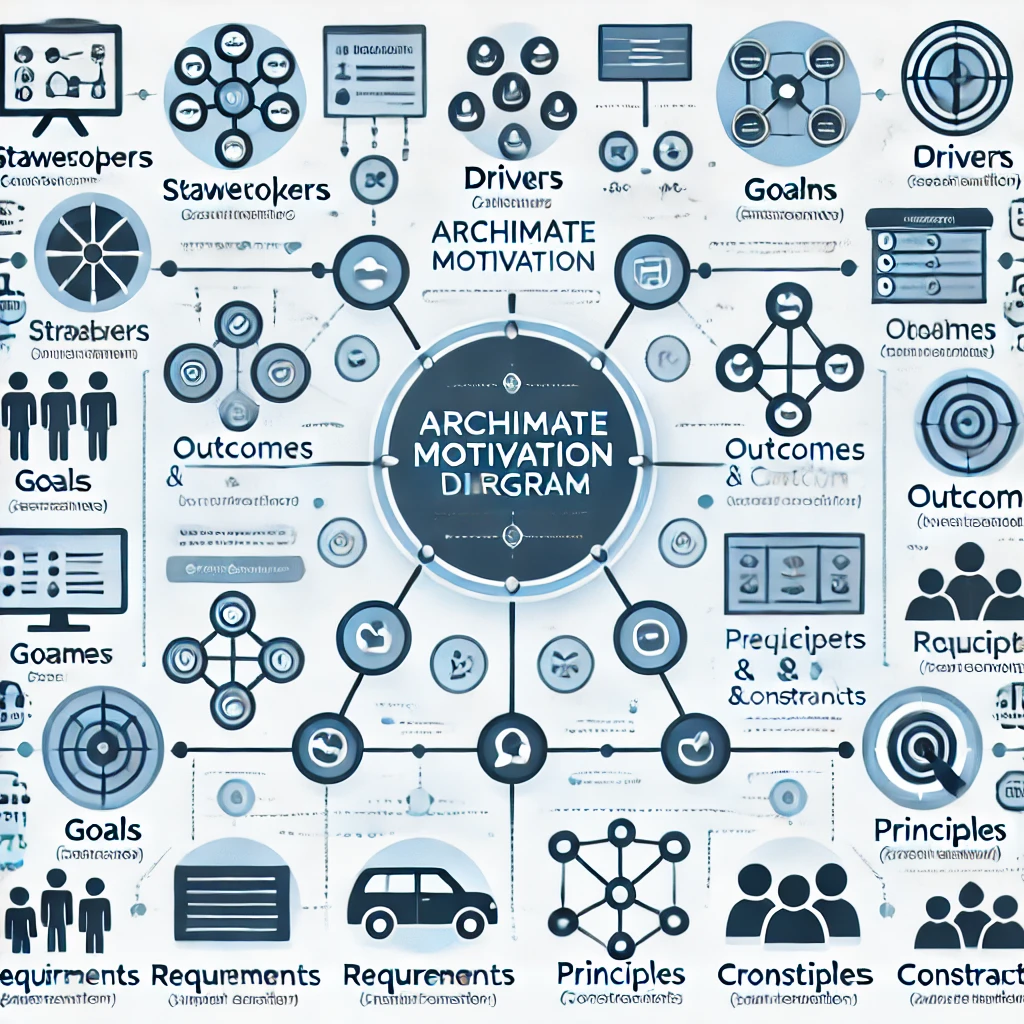Welcome back to another episode of Continuous Improvement, where we delve into the tools and strategies that help businesses evolve and thrive. I'm your host, Victor Leung. Today, we're diving into the world of enterprise architecture with a focus on a powerful modeling language called ArchiMate. Specifically, we'll be exploring the ArchiMate Motivation Diagram—a vital tool for understanding the 'why' behind architectural changes and developments.
In the realm of enterprise architecture, conveying complex ideas and plans in a clear and structured manner is crucial. ArchiMate, an open and independent modeling language, serves this purpose by providing architects with the tools to describe, analyze, and visualize the relationships among business domains in an unambiguous way. One of the core components of ArchiMate is the Motivation Diagram, which helps in understanding the rationale behind architecture changes and developments. So, what exactly is an ArchiMate Motivation Diagram?
An ArchiMate Motivation Diagram focuses on the 'why' aspect of an architecture. It captures the factors that influence the design of the architecture, including the drivers, goals, and stakeholders. The primary aim is to illustrate the motivations that shape the architecture and to align it with the strategic objectives of the organization.
Let's break down the key components of an ArchiMate Motivation Diagram:
Stakeholders
These are the individuals or groups with an interest in the outcome of the architecture. Think of roles like the CIO, CEO, Business Unit Managers, and Customers. Understanding their perspectives is crucial to shaping the architecture.
Drivers
Drivers are external or internal factors that create a need for change within the enterprise. Examples include market trends, regulatory changes, and technological advancements.
Assessment
This involves evaluating the impact of drivers on the organization, often through risk assessments or SWOT analysis.
Goals
Goals are high-level objectives that the enterprise aims to achieve. Examples include increasing market share, improving customer satisfaction, or enhancing operational efficiency.
Outcomes
These are the end results that occur as a consequence of achieving goals, such as higher revenue, reduced costs, or better compliance.
Requirements
Specific needs that must be met to achieve goals. For instance, implementing a new CRM system or ensuring data privacy compliance.
Principles
General rules and guidelines that influence the design and implementation of the architecture. Examples include maintaining data integrity and prioritizing user experience.
Constraints
These are the restrictions or limitations that impact the design or implementation of the architecture, such as budget limitations or regulatory requirements.
Values
Beliefs or standards that stakeholders deem important. Examples include customer-centricity, innovation, and sustainability.
Now that we know the components, let's talk about creating an ArchiMate Motivation Diagram. Here are the steps to follow:
Identify Stakeholders and Drivers
Start by listing all relevant stakeholders and understanding the drivers that necessitate the architectural change. Engage with stakeholders to capture their perspectives and expectations.
Define Goals and Outcomes
Establish clear goals that align with the strategic vision of the organization. Determine the desired outcomes that signify the achievement of these goals.
Determine Requirements and Principles
Identify specific requirements that need to be fulfilled to reach the goals. Establish guiding principles that will shape the architecture and ensure alignment with the organization’s values.
Assess Constraints
Recognize any constraints that might impact the realization of the architecture. These could be financial, regulatory, technological, or resource-based.
Visualize the Relationships
Use ArchiMate notation to map out the relationships between stakeholders, drivers, goals, outcomes, requirements, principles, and constraints. This visual representation helps in understanding how each component influences and interacts with the others.
Let's consider an example. Imagine an organization aiming to enhance its digital customer experience. Here's how the components might be visualized:
- Stakeholders: CIO, Marketing Manager, Customers.
- Drivers: Increasing customer expectations for digital services.
- Assessment: Current digital platform lacks personalization features.
- Goals: Improve customer satisfaction with digital interactions.
- Outcomes: Higher customer retention rates.
- Requirements: Develop a personalized recommendation engine.
- Principles: Focus on user-centric design.
- Constraints: Limited budget for IT projects.
Using ArchiMate Motivation Diagrams offers several benefits:
Clarity and Alignment
It helps in aligning architectural initiatives with strategic business goals, ensuring that all efforts contribute to the organization's overall vision.
Stakeholder Engagement
Facilitates better communication with stakeholders by providing a clear and structured representation of motivations and goals.
Strategic Decision-Making
Supports informed decision-making by highlighting the relationships between different motivational elements and their impact on the architecture.
Change Management
Aids in managing change by clearly outlining the reasons behind architectural changes and the expected outcomes.
In conclusion, the ArchiMate Motivation Diagram is a powerful tool for enterprise architects, providing a clear and structured way to represent the motivations behind architectural decisions. By understanding and utilizing this diagram, architects can ensure that their designs align with the strategic objectives of the organization, engage stakeholders effectively, and manage change efficiently. Whether you are new to ArchiMate or looking to enhance your current practices, the Motivation Diagram is an essential component of your architectural toolkit.
Thank you for tuning in to this episode of Continuous Improvement. If you found this discussion helpful, please share it with your colleagues and subscribe to our podcast for more insights into the world of enterprise architecture and beyond. Until next time, keep striving for continuous improvement.




